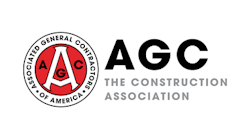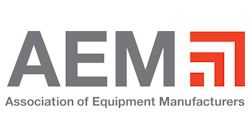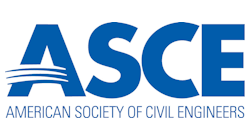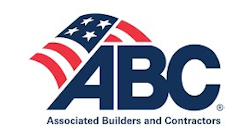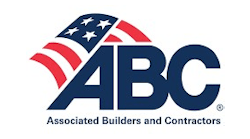Yesterday’s industrial activities often create environmental headaches for today’s communities and businesses. What was once considered “business as usual” now frequently leaves behind sites with contaminated soils that can erode into rivers and leach into water tables.
A former zinc and lead mine in extreme southwestern Missouri is one such site. One of many sites throughout this tri-state region, the land was mined for its deposits beginning in the 1920s. “City populations in this mining region expanded rapidly as the mining activity increased,” says Smiley Rich, general manager for Custom Truck & Equipment (CTE), the Terex Construction dealer for Missouri. “The area was the largest source of lead in the country for producing bullets during World Wars I and II.”
Long since abandoned and now in possession of a private landowner, the property showed signs of the stereotypical discarded mine. “The site was overgrown with heavy vegetation, and there were several ponds and murky areas,” says Kevin Conner, project manager for Envirocon, an environmental contractor with headquarters in Missoula, MT.
The vegetation covered more than just the ground. It blanketed the historical remnants and contaminants from the mining process. “Significant levels of lead and smaller concentrations of zinc and cadmium tailings are found throughout the property and must be relocated,” adds Conner.
This 80-acre parcel of land is part of three such sites in the vicinity, totaling 240 acres, being remediated as part of an agreement struck between the former mine owner and the Federal government. It’s estimated that remediation of all three sites will take approximately two years to complete.
Charged with the task of cleaning up the 80-acre parcel, Envirocon brings a wealth of experience to the project. From its 11 locations throughout the country, the contractor provides full-service environmental remediation and demolition services to the public and private sector. With its unique background, Envirocon offers a multidisciplinary scientific, engineering and construction approach to serve the environmental needs of its international customer base.
“This is an average size project for us,” mentions Conner. “We started the first week of June 2010 with a project deadline of Thanksgiving of this year.”
Site Contained
For the roughly six-month project, Envirocon brought in a team from its location in Golden, CO. One of the first items on Conner’s agenda was to find a local equipment supplier to get the right size, type and number of machines to complete the job. He worked with CTE’s branch in St. Joseph, MO, for equipment rental and service. In addition to dozers, a motor grader, and excavators, “they needed five new Terex TA400 articulated trucks to haul the tailings to the fill area,” says Rich.
The project required the removal of all the lead, zinc, and cadmium tailings tainting more than 90% of the total land area. The tailings were not hauled offsite. Rather, they stayed on the property in a designated fill area.
Virtually everything required to complete the project came from the site. The borrow area that replenished soil from the cleanup zone was turned into a pond for the private landowner. The pond also serves as the property’s runoff retention area. Envirocon’s crews removed between 15 and 20 feet of soil from the borrow area to complete the project.
Anywhere from 2 to 10 feet of contaminated soil and tailings were relocated. “We excavated down to the clay table and bedrock,” says Conner. These excavated areas were capped with at least 18 inches of fresh soil from the borrow area, which brought the property back to original grade.
The lead, zinc, and cadmium waste is being disposed of over a 10-acre onsite fill area, which was also capped with 18 inches of soil. In all, 365,000 yards of contaminated soil were contained in the fill area.
Quagmire
Moving the tailings from one part of the property to a contained fill area proved to be easier said than done. This waste material, mixed with boggy soil, made for challenging site conditions for the excavation, leveling and hauling equipment. “On a daily basis, we had at least one piece of equipment get stuck,” says Conner.
CTE worked with Envirocon to supply equipment that met the demands of the challenging site conditions and maintained the company’s production requirements for staying on schedule. “To match initial payload capacity and desired cycle times for the hauling equipment, the TA400s were the right choice,” says Rich.
These Terex articulated trucks provide Envirocon’s crews a maximum payload capacity of 41.9 tons. With its 450-horsepower, 6-cylinder turbocharged engine, the TA400 offers plenty of power to pull inclines and navigate uneven terrain with a full, 30.3-cubic-yard heaped load capacity.
For this application, the trucks made roughly a 1-mile round-trip circuit between the excavator and waste fill area. In order to meet the project’s production needs, “we expected each truck to give us nine loads per hour for a total of 45 hourly loads for the five trucks,” says Conner. To quickly complete the round-trip cycle, the articulated trucks have a two-speed drop-box transmission with six forward gears that tops out at 37.3 miles per hour, the highest top speed in its class.
For Envirocon in this application, however, top-end speed was not a great concern, since the trucks had to navigate marginal-at-best road conditions. The combination of silty soil, tailings, and boggy site conditions “made it one of the most challenging applications for articulated trucks that I have encountered,” comments Rich.
Truck design helps with flotation and to pull through the quagmire. Even carrying a fully heaped load, the front and rear axles on the TA400 offer a relatively low 17.5 and 26.1 PSI ground contact pressure respectively. The truck’s three axles are permanently locked in all-wheel drive, offering 1,548 foot-pounds of torque to pull through the marginal road conditions. The truck frames articulate 45 degrees and oscillate to navigate the uneven terrain.
Despite the truck’s high rim-pull and flotation design, Envirocon worked through some extremely adverse soil conditions that slowed production. “There were some wet and moist areas where moving the tailings was like hauling baby food,” mentions Conner. These areas limited the production capacity of the 40-ton trucks.
CTE provided solutions to boost hauling capacity for these areas. “We added tailgates to the trucks to help keep the material in the truck beds,” says Rich. “We also added a couple of 30-ton articulated trucks to the equipment mix.”
Those additional Terex TA30 articulated trucks offer a 23-cubic-yard heaped capacity. With a 26% lighter gross vehicle weight than the TA400, the 30-ton trucks helped Envirocon’s operators navigate these soupy areas of the property more efficiently.
Despite these adverse site conditions slowing production, Envirocon still met the end date for this project. By the time the crews finished, these 75 acres of the former mine site were reseeded with fresh vegetation. The company transformed what had been an eyesore into what it should have been all along: pleasing to the public eye and posing no adverse effects for the environment.



